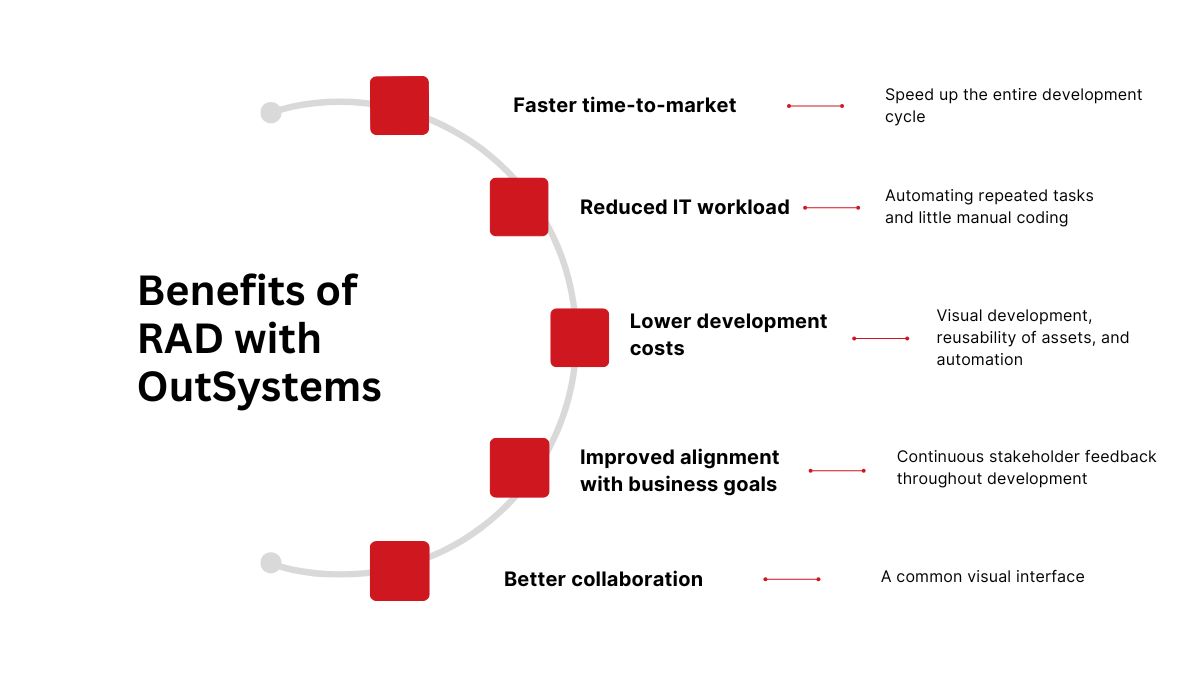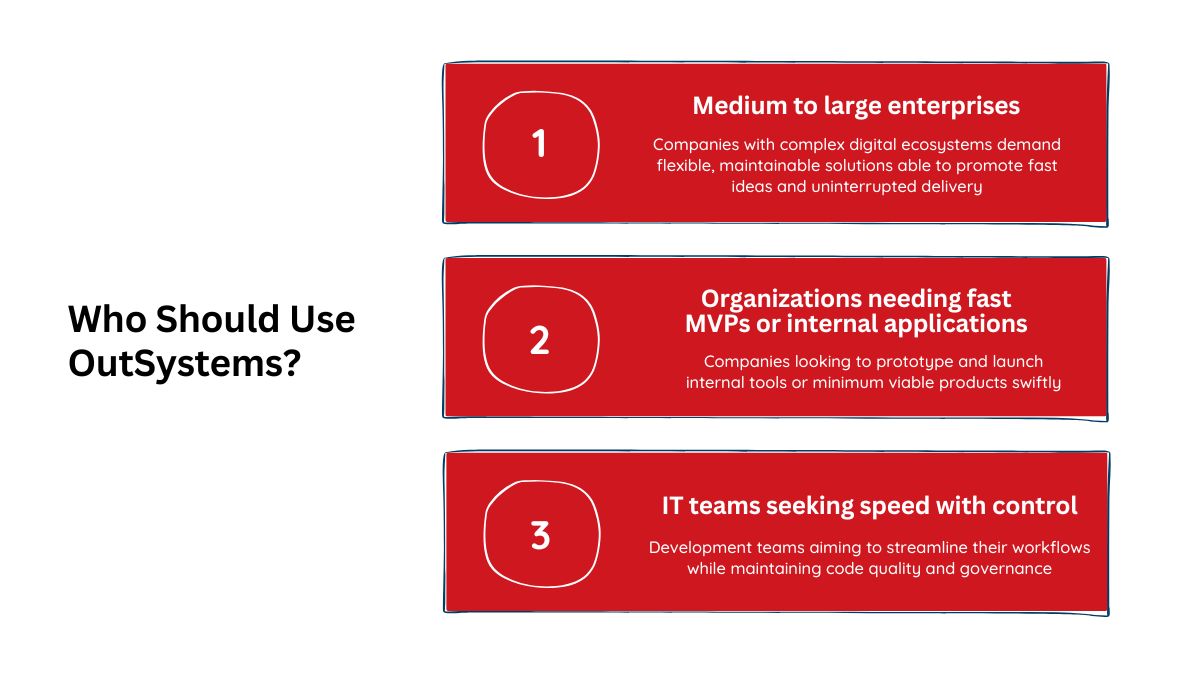The rise of low-code development platforms has been driven by the need for faster innovation and software delivery. OutSystems’ low code is a strong solution among these platforms that lets companies create scalable, excellent applications quickly. The fundamental characteristics, practical applications in the real world, and game-changing advantages of OutSystems will be explored in this article.
What is OutSystems Low-Code?
OutSystems low code is a robust development tool that changes the way contemporary programs are created and distributed. By allowing professional developers and non-technical users to cooperate on creating enterprise-grade apps using a visual, drag-and-drop interface, it removes the hurdles of classic coding. OutSystems lets teams create functional, scalable software quickly by automating repetitive coding tasks and streamlining back-end and front-end system connections.

Outsystems low code distinguishes itself by its unmatched speed and ease of use. OutSystems finds the right balance by presenting pre-built templates, reusable components, and smooth third-party integrations as well as advanced customizability when required, hence unlike other low-code platforms that could trade simplicity for adaptability. Applications developed on OutSystems have quick deployment and cross-platform compatibility, so they can be launched little by little across web and mobile landscapes.
OutSystems, which Gartner and Forrester both consider a low-code frontrunner, enables companies to significantly shorten time-to-market and keep pace in digital transformation.
OutSystems No-Code – Is OutSystems truly No-code?
Visual development platforms’ rise has created some ambiguity between low-code and no-code. Many times, OutSystems is lauded for its reusable components and drag-and-drop tools that allow fast application development. The reality is, though, a little more complex when it comes to the idea of OutSystems no-code.
The major purpose of OutSystems is to be a low-code platform. It lets developers cut manual coding without trading control or scalability, and speed up processes. OutSystems has a complexity level more suitable for expert developers, as opposed to no-code systems built exclusively for non-technical users. Though some coding knowledge is necessary when custom company logic or backend integration is required, its visual development capabilities make it simple to create user interfaces, workflows, and integrations.
OutSystems can still help in particular conditions for non-developers. Using the platform’s intuitive tools and templates, corporate consumers can generate basic applications including internal dashboards, forms, and approval workflows. This allows for quicker prototyping and less reliance on IT teams for fundamental digital requirements.
Still, the OutSystems no-code experience is by definition restricted. No-code powers usually fall short of customizing beyond pre-built features, sophisticated data management, and enterprise-level scalability. For non-technical people, building advanced apps without developer help might be challenging. Although OutSystems offers the basis, realizing its full possibilities usually calls for professional direction.
Although OutSystems offers some no-code capability, particularly for front-end development or basic projects, it is primarily a low-code solution.
Rapid application development (RAD) with OutSystems
Rapid application development with OutSystems becomes a game-changer when every business wants to deliver high-quality applications quickly.
At the heart of this acceleration lies the power of the OutSystems low code platform. It offers a visual development environment enriched with pre-built components, reusable templates, automated deployment pipelines, and seamless integration capabilities. Therefore, applications that are not only delivered faster but also align more closely with real user needs.
Key business benefits:

- – Faster time-to-market: Given OutSystems’ ability to speed up the entire development cycle, companies can deploy solutions in days or weeks rather than months.
- – Reduced IT workload: The platform relieves pressure on development teams using reduced IT workload from automating repeated tasks and little manual coding.
- – Lower development costs: Visual development, reusability of assets, and automation all significantly lower development costs.
- – Improved alignment with business goals: Continuous stakeholder feedback throughout development guarantees the end product satisfies customer and business requirements.
- – Better collaboration: A common visual interface enables designers, developers, and business experts to work more effectively together.
A compelling real-world example of this can be seen in financial technology provider Savana. Faced with fragmented systems and growing demands, Savana leveraged OutSystems to unify operations and launch a loan service solution in just five weeks. Within that short span, the company released three times more features than before, cut UX development costs by 50%, and significantly improved team collaboration through OutSystems’ visual development tools.
Key business benefits of OutSystems
Using the OutSystems low-code platform gives great benefits to companies intending to scale effectively and innovate fast:
- Boosted developer productivity: OutSystems low code platform speeds application creation by automating repetitive tasks and simplifying complex development processes. This boosts developer productivity and allows teams to focus more on innovation than maintenance.
- Reduced maintenance burden: Faster cycles, minimal coding, and broader team participation mean lower long-term costs and easier updates.
- Seamless integration and scalability: With seamless integration across platforms and simple scalability that meets the needs of expanding user bases without sacrificing performance, OutSystems is meant to operate smoothly with current legacy systems.
- Multi-platform development support: OutSystems offers multi-platform development support by default, enabling businesses to provide uniform and high-quality user experiences across all those digital touchpoints using only one cohesive platform.
- OutSystems comes with built-in lifecycle management tools, including CI/CD pipelines, version control, and staging environments—helping teams to deliver with confidence and governance.
- OutSystems supports flexible deployment options – cloud-native, on-premise, or hybrid – ensuring alignment with your IT strategy and compliance needs.
Who should use OutSystems?
The system serves a broad spectrum of consumers with its low-code strategy straight out of the box.

- Medium to large enterprises: For companies with complex digital ecosystems demanding flexible, maintainable solutions able to promote fast ideas and uninterrupted delivery, OutSystems is ideal for medium to large corporations.
- Organizations needing fast MVPs or internal applications: For companies looking to prototype and launch internal tools or minimum viable products swiftly, OutSystems provides the tools and automation needed to get functional apps into users’ hands fast.
- IT teams seeking speed with control: Development teams aiming to streamline their workflows while maintaining code quality and governance will benefit from OutSystems’ blend of visual development, reusable components, and integrated lifecycle management.
Conclusion
For companies looking to speed their application development approach, the OutSystems low code platform gives a game-changing answer. OutSystems offers the agility and speed required to meet your objectives efficiently, whether you seek to simplify internal processes, improve user interaction, or update current systems.
Get in contact with Luvina if you are ready to unleash the complete potential of OutSystems low code in your company. We are here to enable you to capitalize on this great tool and propel your digital transformation.
>> See more: Top Outsystems development company









Read More From Us?
Sign up for our newsletter
Read More From Us?
Sign up for our newsletter